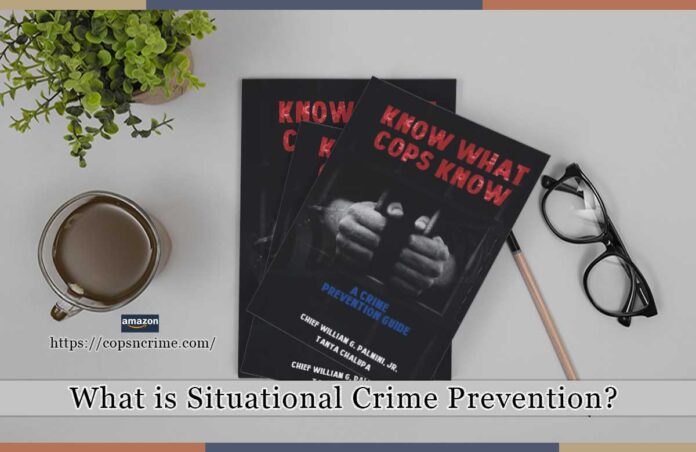Much trendy television crime series usually depict that law enforcement agencies are always one step behind the convicts’ masterminds’ devious plans to inflict chaos on their city. But that’s not nearly the truth. Instead, law enforcement police officers utilize strategic methods like situational crime prevention strategies to protect the civilians in their community before the occurrence of any crime.
So what exactly is situational crime prevention? Many people are unaware of this terminology or this technique’s history, which takes us back 40 years from when it was pioneered. The sole credit for its origination goes to the research team of the British government’s criminology department. Situational crime prevention methods and strategies are now used by police departments worldwide. One of the best true crime books on crime prevention strategies is ‘Know What Cops Know’ by actual police officers and authors Chief William G. Palmini Jr. and Tanya Chalupa.
Chief William G. Palmini has described his fifty years of experience in police agencies and training departments on measures to prevent crime. Readers will discern the required skills and knowledge to make them vigilant and mindful of becoming victims of crime and recognizing potential law-breaking situations. Tanya Chalupa had been the main force behind California’s Child Seat Restraint Law, an expert in traffic-safety issues and law enforcement, and received several awards from the National Highway Traffic Safety Administration, the California Senate Rules Committee, and the National Association of Governors’ Highway Safety Representatives.
What are the Concepts behind Situational Crime Prevention?
Crime prevention and its strategies have always been on the radar of law enforcement police officers, but situational crime prevention offers a different and unique approach. Situational crime prevention is grounded on the belief that crime can be discouraged by making strategic variations and imposing them on the environment by solely focusing on how (instead of why) crime occurs—and consequently, how it can be stopped.
Law enforcement police officers assess many categories of crimes to govern which situational aspects permit the criminal act to be carried out. After conclusions, an officer stated that intervention techniques should be developed that can be used in similar situational aspects. These techniques and actions can vastly reduce the crime rate during particular types of crime events.
Situational crime prevention strategies are based on four components:
- Rational choice – which encompasses comprehending the mindful process of convicts who choose how they ought to commit a crime
- Particularity – which looks at particular categories of crimes to comprehend the prospects that permitted the perpetrator to commit a crime
- Opportunity structure – This is the component in which researchers collect information from both the victims and the convicts to map the convict’s route to committing a felony.
- Techniques and methods – the measures that’ll help in crime prevention and reduce the prospects for the crime.
How do Situational Crime Prevention Strategies Work?
Situational crime prevention strategies focus on explicit situations where actual crimes have happened or can occur in the future. This phenomenon is referred to as ‘near crime occurrences’. SCP aims to reduce the damages elicited by criminal acts through varying immediate or situational aspects in the surroundings where crime frequently occurs.
Law enforcement police officers are profoundly trained in SCP with several techniques to help prevent these situational criminal acts. This significant aspect of SCP centers on lessening the benefits of crime. Situations crime prevention strategies specifically aim to take tactical measures to reduce the frequency of crime by increasing the threats for lawbreakers and decreasing the chances for crime, precisely what the SCP techniques are designed to achieve.
Examples of Situational Crime Prevention in Action
Here are some examples of what SCP appears like in action, founded on some of the techniques law enforcement police officers are skilled in using:
- Elimination of target: Parking a luxury vehicle in a garage instead of on the street, particularly in an area where car break-ins or auto burglaries are a problem.
- Increase natural prospects of surveillance: When planning urban housing society, ensuing well-lit streets and well-constructed housing architecture permit neighbors to keep a watch on another’s properties.
- Control weapons or gears: Limiting the buying of guns and other dangerous tools or not permitting teenagers to buy spray paint.
- Increase the prospects of official surveillance: Install security cameras or alarms in conspicuous areas of the house, so criminals are aware of surveillance measures.
Vigilant conscience: Pavement signs that flash your speed if you’re driving too speedy, or warning signs at the start of a film that state “piracy is never a victimless crime.”








